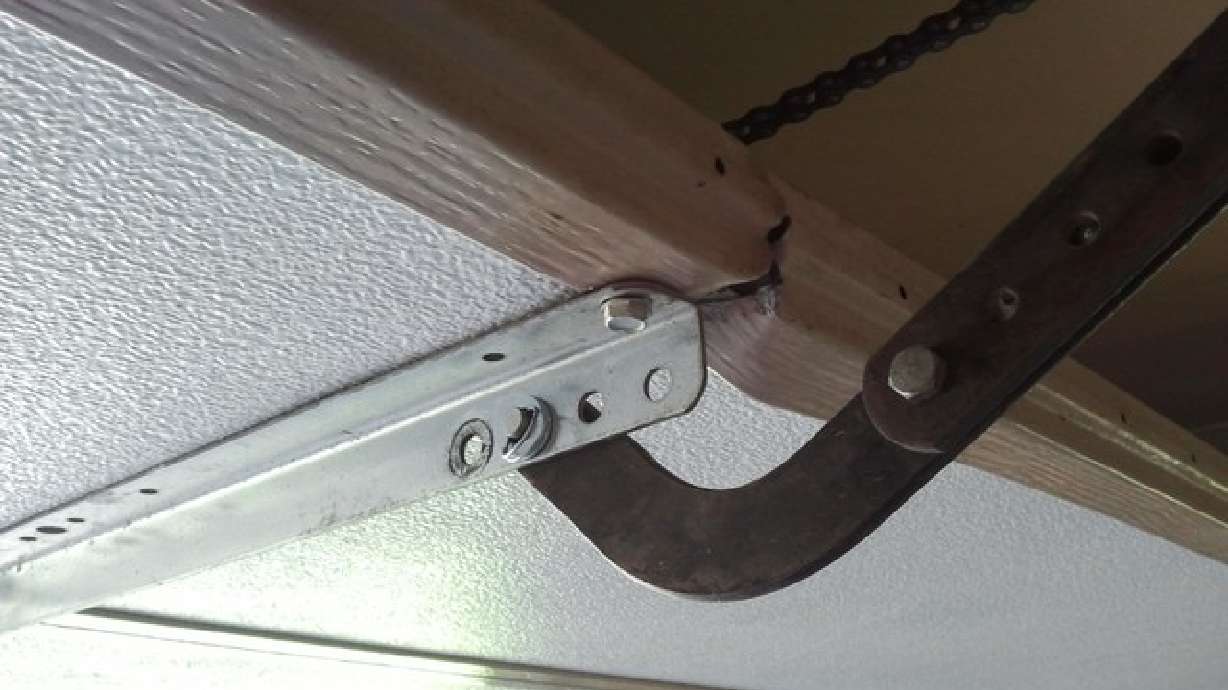Estimated read time: 4-5 minutes
This archived news story is available only for your personal, non-commercial use. Information in the story may be outdated or superseded by additional information. Reading or replaying the story in its archived form does not constitute a republication of the story.
SALT LAKE CITY — Imagine being sentenced to death by King Jean XVI, and finding yourself dragged to your execution by twin French soldiers, each with frightening but fashionable outfits. You are followed by a chanting priest who knows that soon your body will be found in two very distinct places. As you are placed on the base of a guillotine, you look up to your forthcoming fate. The glistening blade spells imminent doom.
You watch in slow motion as the blade falls lower and lower toward destiny. Just before the end, you might think something like this: “Wow, from this angle, that really looks like my garage door closing!"
Death from above
Most people don’t consider their garage door to be a dangerous part of their home, but garage door accidents happen by the thousands every year. Ask around — it’s likely that someone you know has a painful story about injury, death or property damage from a garage door. These doors can crush or kill pets, belongings, children and even adults when the doors are improperly installed or poorly maintained.
When installed to current building standards, garage doors can be quite safe. The danger in garage doors can be summarized in one way: it’s not the door, it’s people. There are so many ways to turn a perfectly safe garage door into a death-mongering guillotine. Here are a few:
Disable your photo sensors
Photo sensors are those little laser items that you typically see on either rail of a garage door opener system. Ideally they should be placed a few inches up from the ground, where a cat or child would trip the sensor as they walk through the beam. Home inspectors sometimes see these pesky sensors placed off in the distance, facing each other from an inch apart. This circumvents the protection that these devices provide and makes the door much more dangerous.
Similarly, if the sensors are lying directly on the concrete slab or 18 inches up, they may not sense a problem where one exists. Under these circumstances, a baby or pet could be crushed — even when the sensors are installed and functional.
Turn your safety sensor up to the max
Most garage door opener systems have a pressure setting. If you ignore your door opener system, the system starts to age and joints become rigid. The garage door is designed to signal this problem by reversing when the down force becomes too heavy. This is the time to lubricate and maintain the system. If you choose to just increase the down force instead, there may be more bones breaking before the system reverses. Depending on the pressure setting, the door might not reverse at all.
Ignore your springs
Do you know where your garage door springs are? These prevent your door from becoming a falling 200-pound plate of death — so they need to be in good condition. They should be inspected and tightened regularly. Don’t do this yourself — the tension can turn a lever bar into a batting machine — and your face is the ball. This is a task best left to the professionals.
Don’t watch your children
A friend once reported that as children, he and his friends would lie underneath the garage door and have it close on them — just to see how tough they were. While he grew up to be a stellar young man, he would admit to less than stellar thinking as a child. Children must be protected from themselves. This means having all of the proper safety equipment installed, maintained and functional — and being as careful as possible about child safety.
If you prefer safety over sandwich
One of the best ways to keep your garage door from becoming a 200-pound crush-toy is to keep the items that operate that door out of reach. The remotes in the cars should never be used as toys, and the opener controls within the home or garage must be beyond grasp. For most homeowners, these should be at least five feet from the floor.
Another key to becoming a garage guru is to call one. Find a garage door technician that you trust — then keep him on speed dial. Ask him how often your springs should be adjusted. Ask him about the chain, the sensors and the moving parts. Ask him to look for signs of structural stress on the door and opener. These guys are inexpensive and are much more welcome in your home than an undertaker. The garage door technician may not smell as good as the undertaker, but rest assured that seeing one regularly will reduce your chances of seeing the other.
Garth Haslem is a structural engineer and experienced home inspector. He's author of "The Home Maintenance Guide" and "The Household Hazards Handbook." See www.homemedic.tv and www.crossroadsengineers.com. Facebook: "Garth Haslem — the Home Medic"









